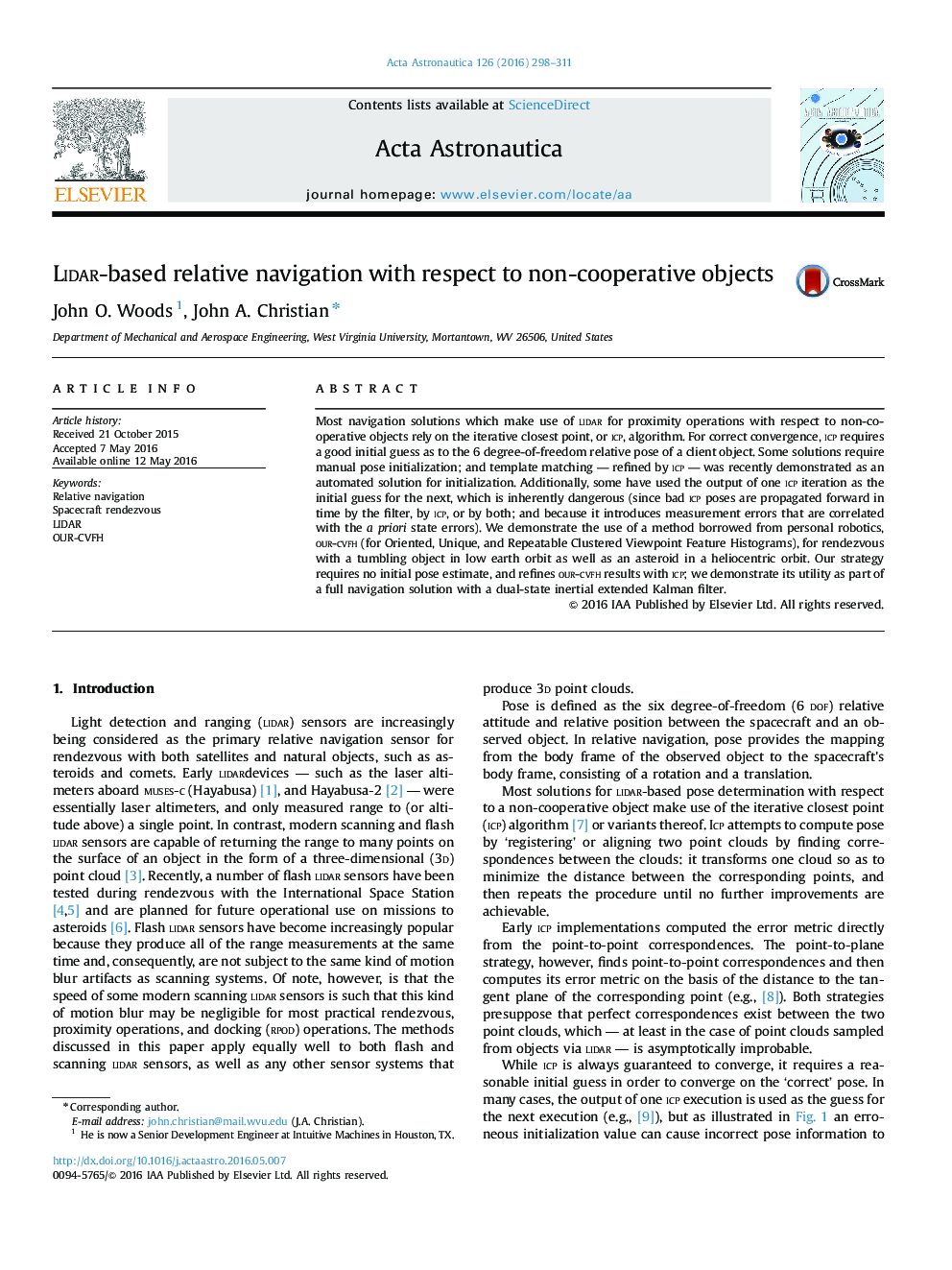| Article ID | Journal | Published Year | Pages | File Type |
|---|---|---|---|---|
| 8056136 | Acta Astronautica | 2016 | 14 Pages |
Abstract
Most navigation solutions which make use of lidar for proximity operations with respect to non-cooperative objects rely on the iterative closest point, or icp, algorithm. For correct convergence, icp requires a good initial guess as to the 6 degree-of-freedom relative pose of a client object. Some solutions require manual pose initialization; and template matching - refined by icp - was recently demonstrated as an automated solution for initialization. Additionally, some have used the output of one icp iteration as the initial guess for the next, which is inherently dangerous (since bad icp poses are propagated forward in time by the filter, by icp, or by both; and because it introduces measurement errors that are correlated with the a priori state errors). We demonstrate the use of a method borrowed from personal robotics, our-cvfh (for Oriented, Unique, and Repeatable Clustered Viewpoint Feature Histograms), for rendezvous with a tumbling object in low earth orbit as well as an asteroid in a heliocentric orbit. Our strategy requires no initial pose estimate, and refines our-cvfh results with icp; we demonstrate its utility as part of a full navigation solution with a dual-state inertial extended Kalman filter.
Related Topics
Physical Sciences and Engineering
Engineering
Aerospace Engineering
Authors
John O. Woods, John A. Christian,
